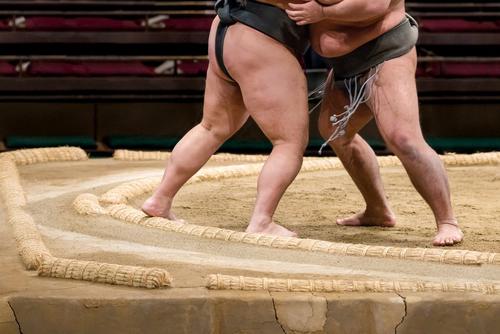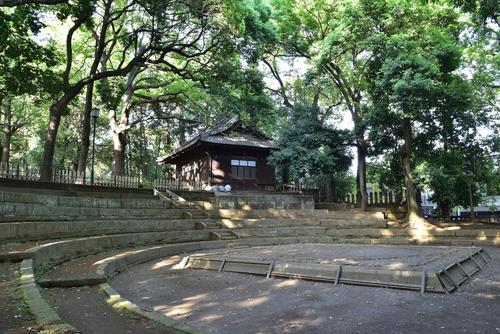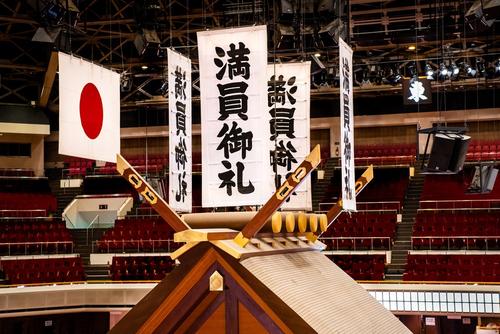Sumo, a traditional Japanese sport, has a long history and is like a national sport of Japan. Even people who are not familiar with sumo probably have a somewhat sacred image of it compared to other sports.
This article provides an easy-to-understand explanation of the history of sumo, including its origins and the period when modern sumo was established. It also introduces tips for enjoying sumo matches, so please use it as a reference to deepen your understanding of sumo as a part of Japanese culture.
When did it start? The history and origins of sumo

First, let's look at when sumo originated and how it became established.
What is the origin of sumo?
Sumo has a long history in Japan, with descriptions of it even found in ancient documents that contain Japanese mythology, such as the Nihon Shoki and Kojiki. From the fact that sumo wrestler dolls have been excavated from ancient tombs, it is believed that sumo was already in existence around the 4th century.
Sumo began as a show of strength and bravado!
Sports matches held in front of the Emperor are called "Tenran-gi," and it is said that the first sumo matches held in front of the Emperor were held before the 4th century, some 2,000 years ago. In the mythical match held in front of the Emperor, two strong men, Nomi no Sukune, who lived in Izumo Province at the time, and Taima no Kehaya, who lived in Yamato Province, faced off in a grappling match that included kicks and punches. It was a little later that sumo as we know it today developed.
Modern sumo was largely established during the Edo period.
Sumo, which began as fighting and grappling, gradually developed into entertainment and a sport. It wasn't until the Edo period that the rules and format of modern-day sumo were established. Sumo, which has existed since the age of mythology, was refined by Edo culture.
Unraveling the history of sumo and the forms of sumo throughout the ages

Sumo is said to have existed since prehistoric times, and its current style was established during the Edo period, but what significance did it have in each era? We will briefly explain the changes that have taken place.
Nara period to Heian period
The earliest documents showing regular sumo matches date back to the Nara period. It was around this time that kicks, punches, and punches were banned, a move that is said to have been made by Emperor Shomu, who was fascinated by the mythology of sumo.
Kamakura period to Sengoku period
From the Kamakura to the Sengoku period, sumo became popular as a form of training for samurai. It was during this period that wrestlers began to be given shikona (sumo names), and professional sumo wrestlers were born. The famous general Oda Nobunaga was also said to have been a big sumo fan.
Edo period
During the Edo period, sumo, which had been entertainment for samurai, spread to the masses. The most famous example was the "Kanjin Sumo," which was held to raise funds for temple repairs. Large merchants sponsored the event, and many famous matches were held, entertaining the common people.
After the Meiji period
As Western culture began to spread during the Meiji period, sumo, in which wrestlers compete naked, was seen as barbaric and at risk of decline. However, with the enthusiasm of sumo lovers and the support of the Emperor, the first Kokugikan was built towards the end of the Meiji period.
Thanks to the passion of those who love sumo, sumo has continued to this day as a sport equivalent to a national sport.
4 things you should know about modern sumo to make watching it even more enjoyable

Learning about the history of sumo will make you want to watch modern sumo. Here are some trivia facts that will make watching sumo more enjoyable.
Stomp to ward off evil spirits
The stomp action is a warm-up before a match, but it is also an action to drive away evil spirits that may be underground. "Shiko" means "ugly," and by stepping on these evil spirits, they are driven away from the ring.
"Salt Throwing" to Purify the Ring
Sumo wrestlers sometimes sprinkle salt before entering the ring. The salt act is to purify the soil of evil spirits and is an act of offering prayers to the gods. Only after becoming a sekitori are wrestlers allowed to sprinkle salt and enter the ring. Sprinkling salt is also proof that they have been recognized as a full-fledged sumo wrestler.
"Power Water" to purify the body
A bucket of water called "chikaramizu" is placed next to the ring. After the salt is sprinkled, the wrestler who won the previous match is asked to dip his mouth in the water from the bucket to rinse and purify himself. The paper used to wipe up the chikaramizu is called "chikarami" and is placed next to the bucket.
"Jincho-zu" (Chemistry Water) - a declaration of fairness in fighting
The unique movement of sumo wrestlers, in which they clap their hands and then spread them out to the sides, is called "chirichozu." It is said to be a declaration of their will to fight fair and square without weapons, using only their bodies, and is also known as "cutting through the dust."

Sumo, which dates back to ancient mythological times, developed for the purposes of imperial matches and samurai training, and became popular among the common people during the Edo period. Due to its long history, the wrestlers' etiquette incorporates movements to ward off evil spirits and pray to the gods. Experiencing Japanese culture through sumo may help you rediscover the good things about Japan.
Mini lesson corner
Learn about Japan and the Japanese language!
"What are the Japanese gods that came from abroad that you can understand in 90 seconds?"
This article was originally published in Nihongo Biyori and has been partially re-edited by KARUTA.
